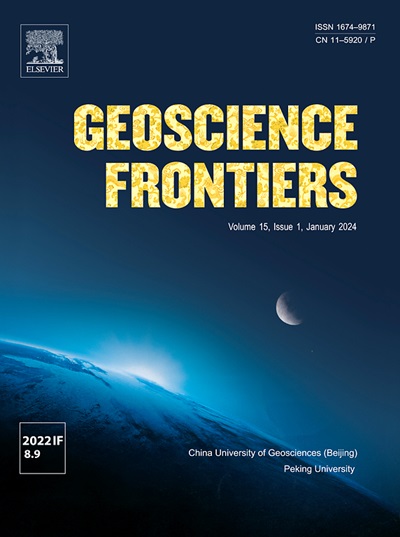Efficient rock joint detection from large-scale 3D point clouds using vectorization and parallel computing approaches
IF 8.9
1区 地球科学
Q1 GEOSCIENCES, MULTIDISCIPLINARY
引用次数: 0
Abstract
The application of three-dimensional (3D) point cloud parametric analyses on exposed rock surfaces, enabled by Light Detection and Ranging (LiDAR) technology, has gained significant popularity due to its efficiency and the high quality of data it provides. However, as research extends to address more regional and complex geological challenges, the demand for algorithms that are both robust and highly efficient in processing large datasets continues to grow. This study proposes an advanced rock joint identification algorithm leveraging artificial neural networks (ANNs), incorporating parallel computing and vectorization of high-performance computing. The algorithm utilizes point cloud attributes—specifically point normal and point curvatures—as input parameters for ANNs, which classify data into rock joints and non-rock joints. Subsequently, individual rock joints are extracted using the density-based spatial clustering of applications with noise (DBSCAN) technique. Principal component analysis (PCA) is subsequently employed to calculate their orientations. By fully utilizing the computational power of parallel computing and vectorization, the algorithm increases the running speed by 3–4 times, enabling the processing of large-scale datasets within seconds. This breakthrough maximizes computational efficiency while maintaining high accuracy (compared with manual measurement, the deviation of the automatic measurement is within 2°), making it an effective solution for large-scale rock joint detection challenges.

基于矢量化和并行计算方法的大规模三维点云岩石节理检测
通过光探测和测距(LiDAR)技术,在暴露的岩石表面上应用三维(3D)点云参数分析,由于其效率和提供的高质量数据而获得了极大的普及。然而,随着研究扩展到解决更多区域和复杂的地质挑战,对在处理大型数据集时既强大又高效的算法的需求继续增长。本文提出了一种利用人工神经网络(ann),结合并行计算和高性能计算向量化的岩体节理识别算法。该算法利用点云属性(特别是点法向和点曲率)作为人工神经网络的输入参数,将数据分为岩石节理和非岩石节理。随后,使用基于密度的空间聚类应用(DBSCAN)技术提取单个岩石节理。随后采用主成分分析(PCA)来计算它们的方向。该算法充分利用并行计算和向量化的计算能力,将运行速度提高3-4倍,可以在数秒内处理大规模数据集。这一突破最大限度地提高了计算效率,同时保持了高精度(与人工测量相比,自动测量的偏差在2°以内),使其成为大规模岩石节理检测挑战的有效解决方案。
本文章由计算机程序翻译,如有差异,请以英文原文为准。
求助全文
约1分钟内获得全文
求助全文
来源期刊

Geoscience frontiers
Earth and Planetary Sciences-General Earth and Planetary Sciences
CiteScore
17.80
自引率
3.40%
发文量
147
审稿时长
35 days
期刊介绍:
Geoscience Frontiers (GSF) is the Journal of China University of Geosciences (Beijing) and Peking University. It publishes peer-reviewed research articles and reviews in interdisciplinary fields of Earth and Planetary Sciences. GSF covers various research areas including petrology and geochemistry, lithospheric architecture and mantle dynamics, global tectonics, economic geology and fuel exploration, geophysics, stratigraphy and paleontology, environmental and engineering geology, astrogeology, and the nexus of resources-energy-emissions-climate under Sustainable Development Goals. The journal aims to bridge innovative, provocative, and challenging concepts and models in these fields, providing insights on correlations and evolution.
 求助内容:
求助内容: 应助结果提醒方式:
应助结果提醒方式:


